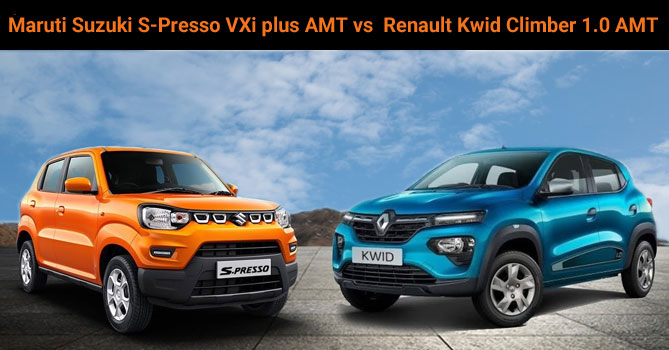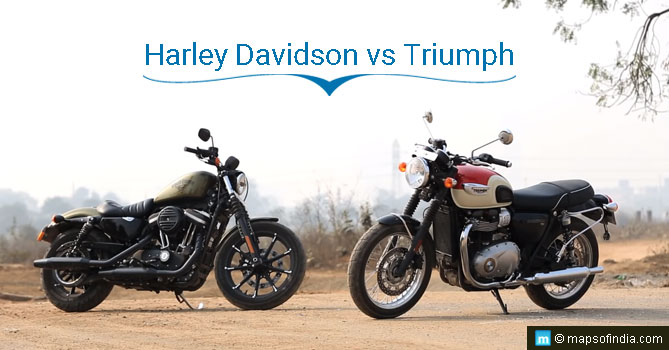
The automotive slowdown has affected sales figures for every automotive manufacturer and in every segment. The least affected however has been the affordable hatchback segment which has still seen some fair sales figures, and fresh new additions from different manufacturers in the last year.
The Renault Kwid broke the stereotype of affordable small-cars having to be poorly styled. Instead of the conventional, boring design that almost every small hatchback had presented itself in, the Kwid took the bar much higher. Its micro-SUV styling with a chest-full of features and pleasant driving experience made it one of the most popular hatchbacks in the Indian market.
Last year, the Maruti S-Presso was launched in light of the success that the tall-boy inspired small-hatch from Renault had enjoyed mostly by itself since its introduction, more than four years ago.
Not one to allow their fair share of attention to be diverted or distributed, Renault introduced a facelifted version of the Kwid immediately after the S-Presso’s launch. This one sported a fresh new face, upgraded features and increased ground clearance, enhancing the SUV-inspired persona further and more elegantly so.
The Maruti-Suzuki S-Presso is offered in ten different variants ranging from the base model at Rs. 4.05 Lakh on-road to the top AMT model at 5.38 Lakh. The Kwid comes in twelve different packages starting from the base variant – standard RXE petrol at Rs. 3.8 Lakh to the top AMT version at 5.32 Lakh.
The whole point of small cars is their practicality and ability to squirm through the worst of daily traffic. Extensive usage of the clutch and gear system causes rapid wear and tear, leading to a short life-span for even the most economical cars. Unless someone is buying the base variant simply because of affordability reasons, the top variants are what one should look for. The AMT in the top variants is the ideal thing for traffic-congested cities as the absence of a clutch to shift gears, again and again, gives us one less thing to worry about.
This comparison is, therefore, between the top variants of Kwid and S-Presso.
Styling and Design
To be frank, there isn’t much competition between the two on the visual aspect, since the Kwid is quite obviously, way better looking than the S-Presso. The split-headlamp and DRL package combines with the prominent grille screams SUV. Roof-rails and the all-round body-cladding accentuate its mini-SUV styling. The orange inserts in the cladding further add to the sporty appeal of the car and complete its persona.
It gets fourteen-inch steel rims that have the same sections carved out as the wheel-caps, giving the illusion of them being alloy wheels. Though the body-structure and form are mostly unchanged, the car is very well proportioned.
The S-Presso, on the other hand, has more chances of raising either eyebrow than both, and not in a very pleasant way. It looks like it was meant to be something but didn’t quite get there. The proportions are not very well placed, and the tall-boy attempt would have been much more successful if the width was given equal, if not more important. The front is also very similar to the inspiration for its design – the Vitara Brezza, but the elements should have had better proportions as well.
It looks a case of steroids-gone-bad with the former Alto, and the cosmetic surgery trying to make it look like a bigger car didn’t go too well either. Moreover, features such as the wheel-arch cladding and the DRLs on the front bumper are all charged-for separately and for a surprisingly high price.
Fourteen-inch wheels are also standard on the Maruti-Suzuki S-Presso, but fail to look good on it because of its height and the gaps in the wheel-wells. The rear is also very ordinary-looking with halogen tail-lamps and a flat tailgate without much surface-change.
The panel quality is also very basic, and the gaps between panels are, to say the least – irregular and asymmetric. The Kwid, on the other hand, has very uniform panel-gaps and though its panels are also light as the S-Presso, their fit and feel are much better than the latter.
The interiors of the S-Presso reflect much of its exterior, which is a good thing from the styling and design point of view since it brings symmetry to its entire design-identity inside and out. The speedometer position will initially take some getting-used-to, and the storage spaces are placed lower-than-usual, leaving them out of a comfortable reach for some passenger-types. The infotainment comes with a seven-inch touchscreen unit and supports apple car-play and android-auto. S-Presso owners also get the option of colour-coordinated accents for the interiors. These are however only inclusive of the car-cost in the Orange colour. For any other colour, one has to pay extra to get the same colour on the accents inside.
Even here, the Kwid gets top marks with its ergonomic layout for the instrument cluster and infotainment unit. The 3-spoke steering wheel wrapped partially in leather and feels very comfortable and inspires confidence. The infotainment system is slightly bigger at eight inches and has the standard apple car-play and android-auto features. The overall positioning for just about anything in the interior is well planned and keeps the car ahead of its competition in that particular aspect as well. The only comparative drawback that the Kwid faces are the quality of necessary materials such as the wipers, which are much better in the S-Presso.
If looks are on the priority, one needn’t look any further. The Kwid has a class-leading style-quotient and is attractive to look at. The S-Presso will surely fare better on other parameters because it is not even close to the Kwid in that particular department.





